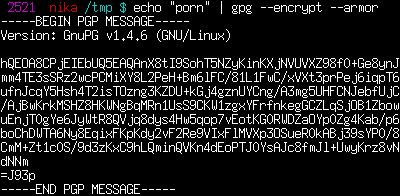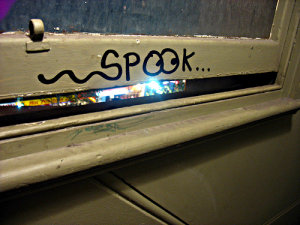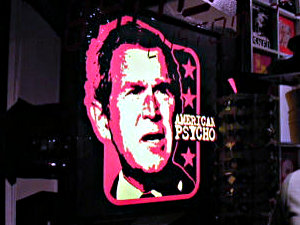photo by orin optiglot
The first book I finished in 2008 is William Gibson’s Spook Country, which is quite different from the other Gibson books I’ve read (Neromancer, The Difference Engine). Not only does this one take place in the present, but all of the technology seems perfectly reasonable. The book is a mystery of sorts, told from three slowly intersecting perspectives, and Gibson did a great job of maintaining my interest in the story by slowly revealing just enough details to keep me guessing what was really going on. Since the three characters that tell the story are also largely in the dark throughout, we find out what is happening as they do. Gibson has always been about ideas, and predictions about what the future holds, and this book is no exception. But because it’s contemporary, it seems as though the future he’s discussing is possibly happening right now, hidden behind the secret veil of our now opaque government.
An excellent book.
photo by Mayu ;P
Another speedy review to catch up on the books I’ve read.
At the same time I was reading this book, we started watching the first season of Dexter via Netflix. Dexter is interesting because it’s main character is completely unable to feel emotion in the way most of us do, but despite this, we’re rooting for him. Dexter also has a compulsion to kill, which has been channelled into killing guilty people who have escaped legal justice. The show provides a contrast to African Pyscho, which is a book about a potential murderer who feels too much emotion. He’s a bit like the unnamed narrator of Dostoyevsky’s Notes from Underground, obsessing over every slight, dreaming about exacting his vengeance, but never quite living up to his heroic vision of himself.
It’s an interesting character, writing from a different place than most of the fiction I read, and was just short enough that the subject didn’t grow tiresome.
photo by jayel aheram in iraq
I seem to have gotten myself way behind on my blogging; I’m five books behind, and way behind on my classical music postings. Traveling to Chicago for a funeral last week didn’t help any, but the real problem is just laziness. Why spend time posting about a book when I could pick up another? Why struggle to understand a Bach cantata when I can let the music speak for itself and move on? Why? Mostly it’s because I don’t get as much out of a book or a piece of music if I don’t think about it and blogging helps me to do that.
So, War and Peace. This is the third time I’ve read it, and I doubt if I’ll ever read it again. I enjoyed it this time around, and I believe that this is the best translation I’ve read (previously I read Garnett and then Maude’s translation), but it just wasn’t that interesting. Sure, it’s one of the greatest books ever written, and I think anyone interested in great writing should read it, but I don’t know that it has much more to say to me.

protected!
A Federal judge in Vermont ruled today that a defendant can’t be compelled to reveal the password used to decrypt files on his or her hard drive. From the ruling:
Compelling Boucher to produce the password compels him to display the contents of his mind to incriminate himself…The foregone conclusion doctrine does not apply to the production of non-physical evidence, existing only in a suspect’s mind where the act of production can be used against him.
This is good news for electronic privacy. Unfortunately, there is already precedent allowing law enforcement to install a key logger on a suspect’s computer to obtain the encryption password without the suspect’s knowledge. So I guess this ruling (for as long as it stands) just protects us when law enforcement wasn’t smart enough to install a key logger before charging us with a crime and seizing our computers.
I wonder what, if any, case law exists to compel a person to reveal the code used to encrypt a hand-written diary? Do we have more privacy rights now that our PGP/GPG keys are part of our fifth amendment right not to act as a witness against ourselves?
Here’s some of what I was doing in 2007:
- more than 50 loaves of bread baked
- 104 books acquired
- 46 books / 18,749 pages read
- 7 batches of beer brewed
- 2,397 tracks or 6 days, 22 hours, 43 minutes of music downloaded or ripped
- 100 out of 224 Bach’s cantatas downloaded or ripped
- We also spend almost half the year moving into our new house and working to get it all set up.
Some of what I hope to do in 2008:
- Listen and blog my growing interest in classical music, especially Bach’s cantatas.
- Design and build a bunch of furniture for our new house. Side tables, a window seat, bathroom cabinet and storage under the stairs are on the current list.
- Collect enough firewood this spring to make it through next winter.
- Keep up with my reading, including reading what’s published of the Oxford History of the United States.
- Try to make as much of my food as I can from unprocessed, local sources.



